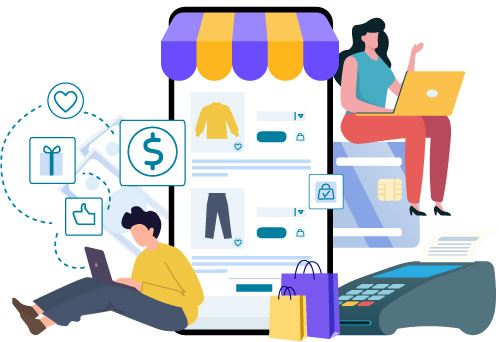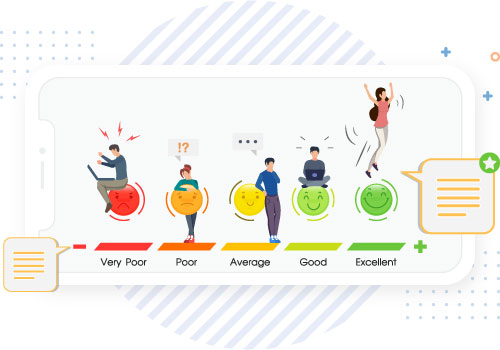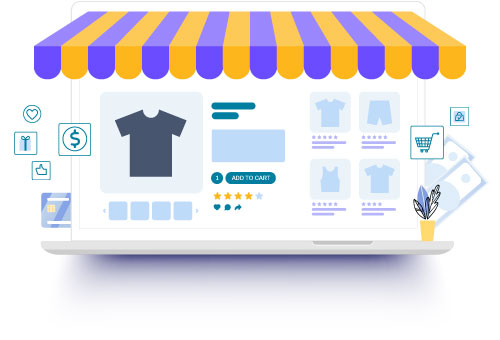What is Digital Customer Experience and How to Improve it
The digital customer experience (DCX) refers to the total digital interactions between a company and its customer and the corresponding impression that it leaves on them. It involves the optimization of both the back-office processes and the front-end services that are beneficial for the customers.
Digital devices, including laptops, smart-phones, i-pads, etc. are widely used today. This extensive digitalization has now made it a necessity rather than a choice for businesses to focus on their digital experience than never before.
Estimates say that customers who get a positive experience tend to spend 140% more than customers who experience negative experiences. Therefore, to attract and retain a loyal customer base through digital interfaces, a business should offer a smooth, seamless, and simple DCX. So, brands need to invest in their digital experience management.
The importance of Digital Customer Experience
DCX has redefined and revolutionized the way businesses interact with their customers, and customers exhibit their purchasing behaviors. It is a surprising fact that not all organizations have fully embraced it yet. There are several compelling reasons why your business should focus on DCX.
Here are five of those.
1. The Digital Transformation
In today’s world, no earnestly customer-focused business can opt to exclude digitalization. For customers expect all aspects of your business to be available online. This would ensure proximity and convenience to partake in the services that they avail from you.
A vast majority of your customers prefer digital channels. Digital transformation stats say firms that have embraced digital transformation make 26% more profit than their counterparts that have not. You would be depriving yourself of innumerable business gains by overlooking the digital experience offered through these.
2. Digital Customers

Gone are the days when e-commerce stores could be accessed through PCs alone. With the wide use of smart devices and apps, customers have become digital now- a- days.
They approach and access services and purchase products from anywhere at any time. This convenience of ordering products and services without interfering with their everyday routines has further extended customer expectations.
However, you cannot meaningfully engage with your digital customers with a website alone. You need to have aptly customized apps to simplify customer transactions and magnify customer loyalty. 40% of consumers admit that they conduct research using their mobile before buying a product. The future of mobile commerce (m-commerce) is bright, as it is expected to drive 54% sales by 2021.
3. New and enhanced ways to measure customer feedback

Customer feedback measurement is one of the biggest pluses of e-commerce. It has immensely simplified the measurement process and has also enabled the obtaining of great details from it. You can derive a great deal of qualitative feedback from quantitative data (like no. of visits, visiting times, devices used, click-through paths, exit paths, etc.).
This is something impossible with conventional feedback methods. You can also get quality feedback by sending out feedback forms and surveys. You can thereby get to analyze the probable reasons behind your inability to achieve your business goals and rightly address those issues with digital experience by responding and matching expectations.
4. Personalizing services as per customer needs
61% of mobile consumers admit that they tend to purchase from mobile sites and apps that customize information to their preferences and location. You can increase your sales and revenue generation by displaying an “Other products you may like” section.
Digital Customer Experience facilitates the fine-tuning of your services to suit individual needs. Such personalization is possible by deriving meaningful conclusions from analytics obtained from records like customer registration process, browsing habits, purchasing behavior, and more.
For instance, you can drive sales by displaying content of customer’s preferences and interests at his/her login at your site. Thus, you can offer a well- customized solution to your customer, and thereby increase their satisfaction and value- for- money. This applies to your information sources and services as well.
5. Escalated customer expectations
Customer expectations have elevated over the recent years owing to the emergence of innumerable online services. This holds especially true in situations when customers want to solve their own problems/needs.
Efficient e-commerce sites successfully address these expectations by offering highly personalized and interactive documentation and troubleshooting solutions. By doing so, you allow the users to resolve the issues arising on your own.
Further, offering this kind of self-service solution simplifies the task and saves abundant resources for your business. Thus, by providing personalized, relevant, and accurate content, you can make the most of the DCX.
Thus, DCX is a very precious resource that every business shouldn’t fail to invest in. Now that you got to know the importance of it let’s move to the seven phases of creating it.
7 Phases Involved in the Digital Customer Experience Strategy
While many businesses find the potential success of DCX enticing, most of them do not understand the strategy involved. The digital experience strategy requires brands to employ a distinctive approach for identifying their digital fitness to the overall customer experience (CX) and CX journey and engaging with their customers. However, this generally involves seven phases, as discussed below.
1. Create a strong online presence

You need to make it easy for your potential customers to hear positive things about you. You can achieve this by engaging media and influencers with your brand to make genuine social media mentions and reviews about you.
Estimates say that 55% of consumers have made online purchases after hearing about the brand from social media. This is an excellent motivator to tag your products on Facebook, Twitter, LinkedIn, and Instagram.
Additionally, don’t forget to work on SEO as well. This will help your search rankings to go up, and thereby, new customers will easily find you. 67% of consumers state that they often indulge in “digital window shopping” through their smart-phones, and 77% of them in the process end up purchasing a product.
2. Simplify access and navigation

73% of consumers state that they ditch a poorly designed e-commerce site, and go for one that makes buying easier. Make your site and apps simple and easy for users to access and navigate your digital channels. You could achieve this by focusing on the user experience.
For delivering a satisfying DCX in this phase, you should comprehend several factors, such as the intention of customers while arriving at your site or app (just for deriving inspiration or for buying).
They engage with you, their specific exit points, and the most efficient and the clumsy parts of your site.
You can derive inspirations from these insights to solve problem areas and act meaningfully to enhance customer engagements and journeys.
3. Evaluate your offering
Often customers tend to review your products and services against those of your competitors. To outweigh your rivals, you need to comprehend the offering and experience preferred by your customers rightly.
And then, you need to broadcast your uniqueness across different digital channels. You should also keep your brand up to customers’ expectations.
You also need to keep an eye on reviews posted regarding the experience you provide and respond to those. This info could guide those innumerable individuals who are constantly striding a never-ending list of options.
4. Work on the conversions

You can increase the conversion of your prospects into customers by offering a great digital experience. Analyze experience data to comprehend the reasons behind failed conversions. These can include poor site navigation, unsuited delivery times, hidden shipping charges, distractions, etc. Now, course-correct those to rectify defective areas.
Also, remember to focus on the physical delivery of your product. Ensure that it is delivered in a timely, safe, and secure manner. In case it is going to be late, do communicate the issue in meaningful words to the customer.
5. Faster customer loyalty and advocacy

The best Digital Customer Experience strategy continues beyond the purchase phase. So, you need to transform your customers into advocates who would increase your offering’s awareness. Use digital channels to promote customer bonding and advocacy.
Post case studies and how-to- guides on your website and apps so that customers benefit from their purchase and new features and updates on social media channels so that they stay updated. For instance, a mobile phone seller will benefit from sharing great phone maintenance tips.
6. Offer self- service support

Customers seek the help of digital channels to resolve the challenges they face with a product. So, they expect organizations and brands to offer them resources to aid in this. You can deliver great customer experiences in this regard through digital contact centers and AI-powered chatbots.
Such empowering customers to self-serve to solve common challenges can enhance customer satisfaction and bonding.
7. Post-purchase follow up
Encourage your happy customers to share their reviews of your product online. This will influence other prospects to become aware of your brand and purchase from you. Simultaneously, apply your comprehension of your customer’s interests and previous buying behavior to suggest special deals and personalized products of their preferences.
Each of these seven stages to be considered in creating DCX is crucial. So, make sure that you excite your customers at each of these. For this, you need to generate a holistic view of your customer by looking at individual experiences across digital interactions and touchpoints. This can be done by integrating ease of use, operational data (O-data) like bounce and conversion rates, and experience data (X-data) on a single platform of action.
Conclusion
Digital Customer Experience can be concluded as a blanket term consisting of the sum of experiences, both digital and non-digital, a customer has with your business. It includes his or her experience with your company, brand, products and/services, offering, etc. across all possible moments of contact and digital touchpoints. Businesses should aim at providing a great customer experience for creating a competitive advantage for themselves.

